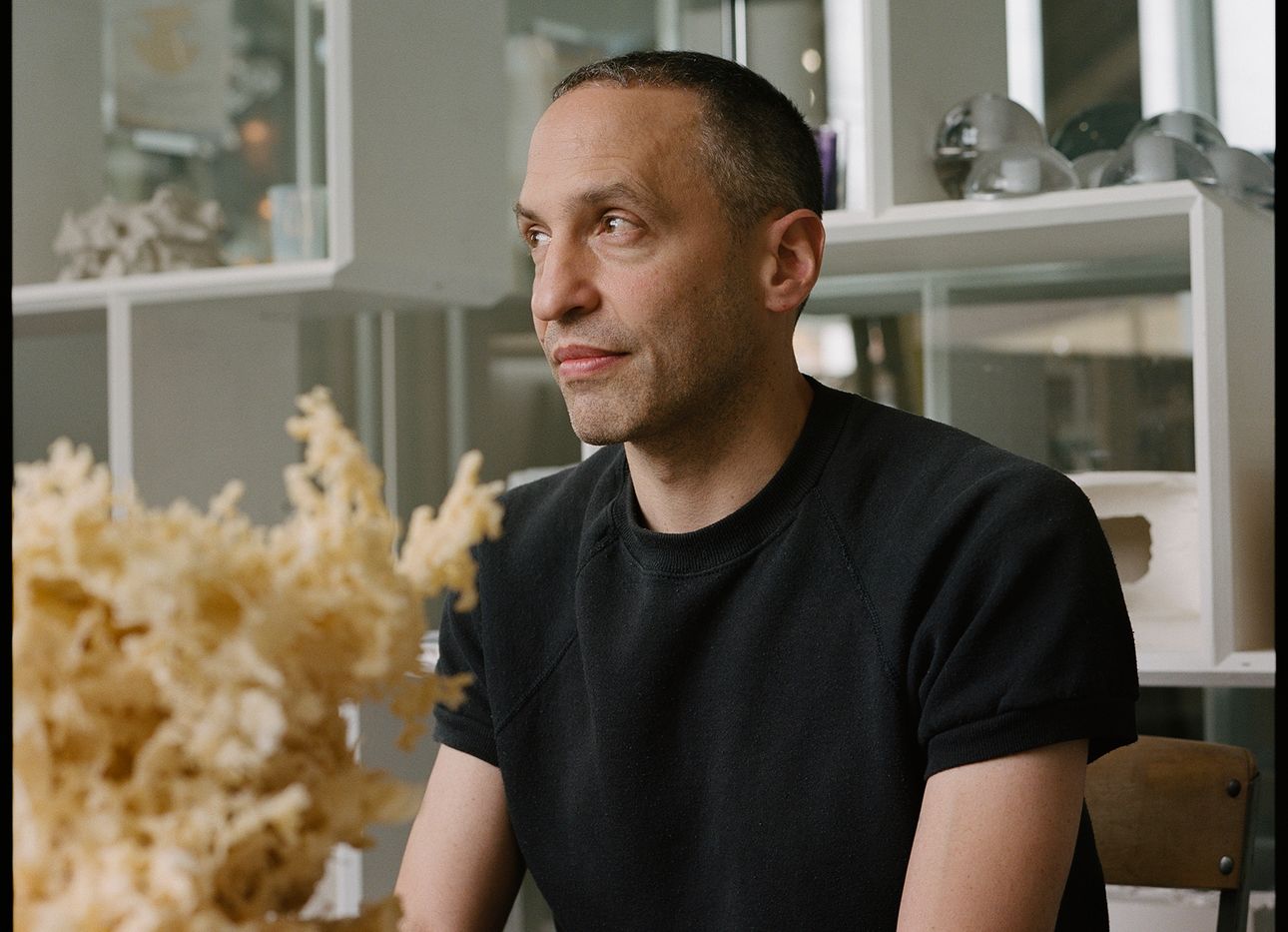
How Serendipity Helps Omer Arbel Materialize the Unseen
Omer Arbel, an Israeli-born, Vancouver-based artist and designer who creates boundary-defying objects and architecture, gives shape to abstract intangibles—such as light or a magnetic field—by incorporating them into artfully manipulated, often volatile matter, including glass, wax, and concrete. Each form begins with material research, in which he makes space for the intrinsic qualities of a substance (instead of a preconceived idea for it) to inform its appearance, resulting in work that’s conceptual, but not inaccessible: Recognizable pieces, such as sand-cast brass coat hangers or lampshades made from randomly rolled pieces of raw porcelain, are enhanced by Arbel’s experimental strategy for materializing the unseen.
A new monograph, Omer Arbel (Phaidon), edited by Stephanie Rebick, an associate curator at the Vancouver Art Gallery, celebrates the depth and breadth of the polymath’s work. It spans from his debut design, 14.0, a cascading chandelier of clear, cast-glass spheres that was introduced in 2005, to 94.0, a forthcoming series of residences, built using cedar burl offcuts from the local logging industry, on a cliff in Governor’s Point, British Columbia. (Arbel, who presents work through his design studio, OAO Works, and Bocci, a lighting brand he co-founded, titles all of his projects with a number that indicates the order in which it was conceptualized.) Here, he speaks with us about the role serendipity plays in his practice.
“Chance and surprise are fundamental to my process. That’s because, when I first started out, it was very apparent that the best parts of the early works were a consequence of things I hadn’t planned for. The most critically and commercially successful aspects of the chandelier 14.0, for example, were things I never [anticipated]. That was kind of a fork in the road in my career, because I had to let go of a lot of ego, and accept that the piece was successful despite my efforts, not because of them.
From that point on, I was interested in instigating those moments of chance, approaching each project in a very open-ended way. And also in learning from the materials, instead of imposing a vision upon them.
The act of revealing what I’ve made is another area of obsession [for me]. Light is one way that I’ve approached that. It’s strange, but I always prefer the lighting works unlit. I think I find them more interesting, or mysterious, or more complex that way.
The functional goal of the light in a work is secondary to its purpose in revealing the interesting forms that I’ve discovered. The pieces are activated by light, which gives people access to them. They’re not just these mute chunks of stuff that’s weird, and maybe interesting in their shape—they also give you a clue as to what’s happening inside, to how layering of the work exists.”